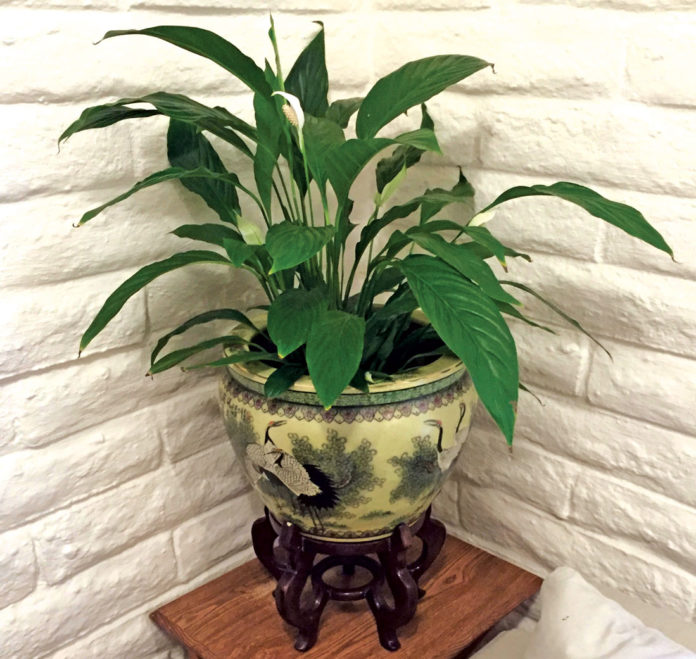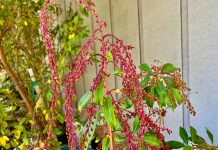I’m embarrassed to confess that I don’t always take my own advice. Take my houseplants, for instance. Decades of research have shown that houseplants reduce stress and anxiety. They can sharpen our attention, make us more productive and give us a happier outlook. They can fight indoor pollution and add moisture to the air in our homes. So why do a few of mine look so sad?
First a typical house plant lives in the understory of a tropical rainforest where it gets bright filtered light. They’re used to warm rain and perfect drainage. I’ve moved mine to the best light I have, but it’s not enough for a few of them. I might have to find them better homes.
I also had a problem last year by fertilizing a little too much. I could see the edges of some leaves were brown, which was probably from over fertilizing but also could have been lack of light or too much water. Skip fertilizer in December and January and start up half strength mid-February.
Water just enough to keep the soil from going totally dry allowing oxygen to move back into the root zone. Houseplants are resting at this time of year and don’t use as much water as when they are actively growing. Let the soil in a 4-6 inch pot dry half an inch down between watering then water with room temperature water. And don’t let the pot sit in a saucer of water or the roots will rot. If your plant is in a larger pot, let the soil dry down a couple inches.
Don’t repot a plant in winter when they are slow to grow new roots. I’m really anxious to transplant a couple of mine into more decorative pots, but I’m going to hold off until March.
Plants that I have had good results with in lower light are philodendron, peace lily, Chinese evergreen, cast-iron plant, schefflera, arboricola, ferns and palms. Hanging plants that grow well in low light are heart-shaped philodendron, pathos and grape ivy. Most of these house plants grow naturally in low light areas of the jungle. Don’t overwater and they’ll be happy.
So far, this winter hasn’t been as rainy as last, but still it’s been cold and my home is closed up to keep the heating bill down. Without doors and windows open to circulate fresh air, toxins such as benzene, formaldehyde and trichloroethylene can be realized from furniture upholstery, carpets, cleaning products, paint, plastics and rubber can build up inside. Carbon monoxide from the incomplete burning or wood and vehicle exhaust can also be present in indoor air.
Biological pollutants include bacteria, viruses, animal dander, house dust, pollen and dried cat saliva. What? Cat saliva? Do you hear that Archer? House mites, the source of one of the most powerful biological allergens, grow in damp warm environments. Mold and mildew grow in moist places like central heating systems and are just one more source of indoor pollution.
NASA researchers suggest that the most efficient air cleaning occurs with at least one houseplants per 100 square feet. Even the microorganisms in potting soil removes some toxins.
Some of the easiest houseplants to grow are some of the best to have in your home. Any of the plants listed above would fit the bill. If you have a cat or dog that nibbles, however, it’s best to stick with spider plants, palms and orchids, African violets, aluminum plant, bromeliads, peperomia, cast iron plants, Christmas cactus, chenille plant, creeping Charlie, false aralia wandering jew, piggyback plant and succulents like donkey’s tail and echeveria.
With a little planning you can clean the air in your home while keeping the pets safe.
Jan Nelson, a landscape designer and California-certified nursery professional, will answer questions about gardening in the Santa Cruz Mountains. Email her at ja******@*ol.com, or visit jannelsonlandscapedesign.com.













